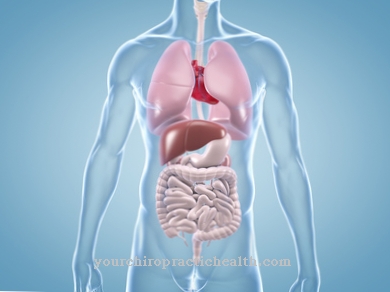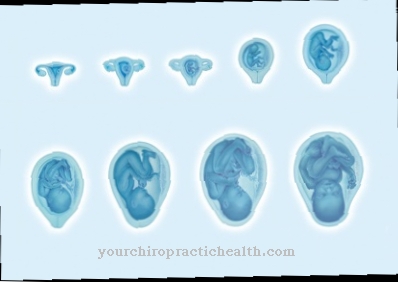The term occlusion In dentistry, denotes the ratio of the lower to the upper row of teeth when the jaw is closed in the intercuspation (final bite position). The opposite is a misalignment, a lack of contact with the antagonist, which is known as non-occlusion.
What is occlusion?

Any tooth contact between the teeth of the upper and lower jaw is called an occlusion. It is about the closure in the final bite. Dentistry defines occlusion as "contact between the teeth of both jaws".
The occlusal impression is taken as an impression of both rows of teeth in the occlusal position (final bite position). A static occlusion occurs when the teeth contact without moving the lower jaw during the final bite (intercuspidation). Tooth contacts that arise through movements of the lower jaw are called dynamic occlusion in dentistry.
Function & task
Occlusion is synonymous with a normal function of the lower and upper jaw, which guarantees trouble-free sliding movements of the antagonistic posterior teeth involved.
The concept of occlusion is closely related to the phenomenon of occlusion disorders, which can cause attritions (abrasion) and abrasions (abrasion of the tooth surface). According to this model, the toothing is called occlusion. The prerequisite for normal occlusion is the trouble-free cooperation between the masticatory muscles, the temporomandibular joint and the teeth. The upper and lower jaw must be correctly shaped.
Dentists use an occlusion film to test whether or not there is normal occlusion. To do this, the patient bites the thin film, which acts like a carbon paper and absorbs the impressions of the teeth on the back. In this way, the dentist can understand where the individual contact points (occlusion points) are.
The occlusion foil is also known under the terms contact foil, test foil or articulation paper. It is coated with dye. If both rows of teeth meet in the occlusal position, they form an occlusal plane. In the resting position, the teeth do not touch, but gape one to two millimeters apart in the static occlusion (intercuspation). Each tooth of the upper row of teeth does not meet the opposite tooth of the lower row of teeth, but rather has contact with two antagonists (teeth) of the lower row of teeth during the occlusion, over which the pressure is distributed (dynamic occlusion).
With static maximum occlusion, tooth contact occurs without moving the lower jaw. The maximum intercuspation is a static occlusion with a maximum multi-point contact of the teeth of both jaw rows. Habitual occlusion is the habitual static occlusion with which actions habitually repeat themselves. With centric occlusion, the condyle is closed in the centric position (joint head of the temporomandibular joint).
The pits and cusps on the surface of the teeth ensure optimal tooth alignment. The upper row of teeth is set back half a tooth width because the upper incisors are wider than their counterpart in the lower row of teeth. During the chewing process, the teeth slide towards each other. With this articulation, the canine takes the lead (canine guidance). With the anterior guidance, a dynamic occlusion takes place between the anterior teeth of the upper and lower jaw. Group management is a dynamic occlusion of several teeth on the laterotrusion side (working side of the temporomandibular joint).
With regular occlusion, the closing line of the lip and the occlusal plane form a straight line. When performing a complete denture, the dental technician takes the occlusion situation of his patient into account. Every contact between the individual teeth is reported by the receptors of the periodontal membrane within the tooth root. The bit has a very finely tuned sensor system. The message as to when the bite contact has been reached and the jaw muscles perform the chewing movement occurs quickly.
The oral mucosa is criss-crossed with nerve endings that measure the size and location of the incoming food. In the event of a disturbed feedback, the teeth do not work evenly, which leads to malfunction. The jaw muscles reflexively try to establish contact, which is not possible due to the disturbed occlusion and causes excessive activity of the jaw muscles. This process leads to fatigue in the jaw muscles, which leads to tension in all structures involved. Disturbed bite contacts have the effect of parafunctions such as teeth grinding and tooth clenching. This can lead to facets and tooth erosion.
You can find your medication here
➔ Medication for toothacheIllnesses & ailments
Irregularities in the normal row of teeth can be traced back to various causes, which can relate to the entire set of teeth or to individual teeth. Crowns, bridges, excessive fillings, or extracted teeth that are not replaced can lead to occlusal disorders. Receptors report these incorrect contacts (interference contacts) to the central nervous system, which is responsible for coordinating the control center. After receiving the error message, the brain forwards the command to the masticatory muscles to bite harder in order to compensate for the misalignment.
Positional anomalies such as open bite, cross bite or forced bite prevent regular occlusion. Disturbances of the physiological occlusion can lead to very unpleasant complaints. Due to the uneven loading of individual teeth, the entire dental apparatus is permanently damaged. The masticatory muscles and the temporomandibular joint are also negatively affected. Toothache, tension in the masticatory muscles and pain in the temporomandibular joint can result.
Not only the temporomandibular joints are affected, but also other parts of the body such as the head, shoulders, spine and even the knee joints, because the temporomandibular joints, teeth and spine can produce uniform clinical pictures. Since there is no longer a regular articulation, the chewing function can also be impaired.
Dentists remove simple causes such as excessive fillings, tooth gaps or damaged crowns in minor interventions. Raised areas are determined using an occlusion foil and removed by grinding. Orthodontic interventions, which are carried out by oral surgeons on an outpatient or inpatient basis, depending on the severity of the procedure, restore a regulated occlusion in the event of bite abnormalities.























.jpg)



